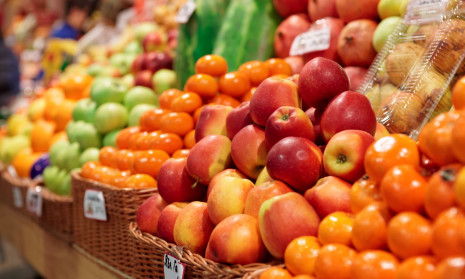Sustaining World Food Supply using novel technologies

The UN projects that by 2050 World food production will need to increase by a minimum of 70% to feed a projected World population of more than 9 billion.
It is clear that extraordinary improvements in agricultural productivity will be necessary. World food production has been steadily increasing from ~2.94 billon metric tonnes (Bt) in 1961 (plants ~2.45 Bt and ~0.49 animals Bt) to ~8.27 Bt in 2007 (plants ~7.36 Bt and animals ~1.22 Bt)
(1). Most importantly, this massive increase in food production was pro- duced on the same area of land, as a result of improved crop cultivars, crop technology advances, and better man- agement practices (2). Projections suggest that increases in World food production between now and 2050 are feasible provided that existing and newly developed technology can genetically improve cultivars, and with improved crop management practices, will mitigate any adverse effects on the environment, whilst avoiding the culti- vation of new land (3).
In creating new cultivars, plant breeders will have to pay increased attention to the effects of global warming on food production. However, current advances in technol- ogy are capable of doing so and of dramatically decreasing the time to deliver genetic improvements into the field. These include tissue and anther culture techniques, which bypass some traditional approaches to seed production; modern approaches to mutation technology and the utiliza- tion of molecular biology technolo- gies, such as marker-assisted selection. Introducing gene complexes by genet- ic manipulation from related species has a long history (4) and will contin- ue into the future. Arguably, the tech- nology of high future impact is likely to be plant transformation, currently defined as involving the transfer of genes from one organism to another bypassing any sexual process. The coordinated application of all existing and new technologies will be required to sustain the productivity of arable lands and to maintain our fragile envi- ronment.
Quantum increases in yield, and a reduction in production costs by bet- ter management will come about through the application of genetic manipulation in novel ways. Clearly, innovative thinking and long-term research are needed for current ideas to reach practice. Two promising, but theoretical, approaches are improving 1) photosynthesis in C3 cereal species by making them ‘C4-like’, and 2) nitro- gen fixation in cereals. There is opti- mism that these goals can be achieved; but the obstacles to success are formidable and the chances of suc- cess in the short-term are low. A proj-ect to develop C4 like photosynthesis in rice is already underway (5 – see current Issue), and routes for N fixa- tion are being explored (6). However, considering the development time for cultivar production involving the world’s crops, we must keep in mind that most of the cultivars to be released in the next 10-20 years are already in development, or will need to be within the next 5 years. These novel challenges of N fixation and C-4 like crops are still theoretical and some time away from implementation, so are unlikely to be available to farmers until well into the future. The process of nitrogen fixation requires the coor- dinated action of many genes, and the manipulation of such a complex sys- tem is beyond current technology. However, creating symbiotic relation- ships with N-fixing bacteria in plant roots, may be a viable alternative route.
Continued long-term improvement in world food production is fundamen- tal to World security. A future reduc- tion in human conflict, the environ- ment, and our biodiversity are inti- mately tied to the increase of crop production. Feeding the growing human population is clearly the most important challenge facing the world today and we will need to use creative thinking in any approach to applied/basic research problems to increase food production.
References
- I 1. The United Nations Food and Agriculture Organization FAOSTAT (http://faostat.fao.org/site/368/Deskt opDefault.aspx?PageID=368#ancor) (2010).
- 2. World Bank World Development Report: Agriculture for Development (The World Bank, Washington, D.C., 2008).
- 3. Gustafson, J.P., Borlaug, N.E., and Raven, P.H. (2010). World Food Supply and Biodiversity. World Agriculture. 1:37-41.
- 4. Sears, E.R. (1954). The transfer of leaf-rust resistance from Aegilops umbellulata to wheat. Brookhaven Symp. Biol. 9:1-22.
- 5. Sheehy, J.E., and Mitchell, P.L. (2011). Developments in Rice Research: Visions and Pragmatism. ThisIssue
- 6. Perrin H. Beatty and Allen G. (2011). Good Future Prospects for Cereals That Fix Nitrogen
- Science 22-July-2011: 416-417. [DOI:10.1126/science.1209467]

